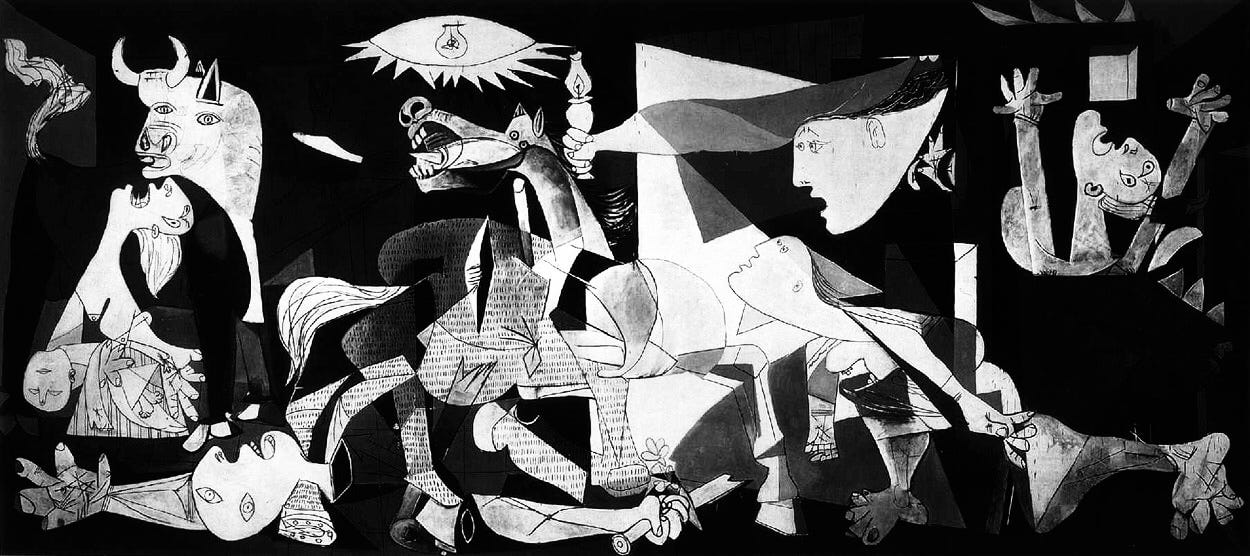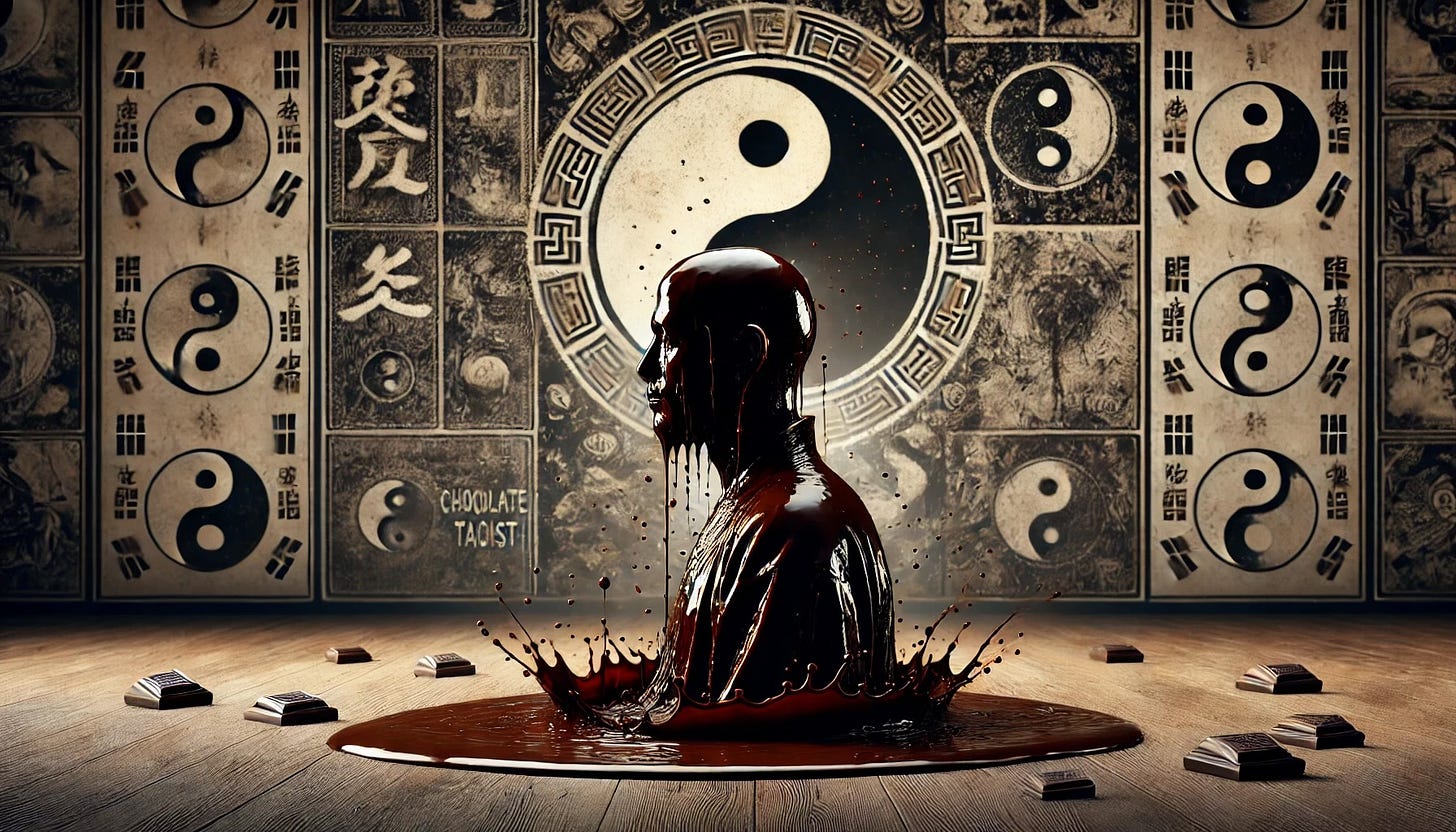In the anarchic carnival of modern art, Picasso’s artistic creation “Guernica” roars like a lion, a riotous symphony that shatters our illusions of order.
It’s a tempestuous canvas, a visual insurgency against the neatness we crave. Instead, it demands that we surrender to the maelstrom of chaos.
Seen through the rebellious eyes of Lao Tzu and Zhuangzi, “Guernica” is an allegorical slap in the face, a mirror reflecting the relentless ebb and flow of existence, and the deep wisdom concealed within its disarray.
“Guernica” is no mere painting. It’s a rebellious testament to the chaotic, unpredictable madness of life. Picasso, with the soul of a Taoist trickster, conjures a world where normalcy is a myth, and chaos reigns supreme. This is no lamentation—it's a celebration of the wild, untamed essence of reality.
When I first saw Picasso’s “Guernica,” its sprawling chaos and raw turmoil hit me like a freight train. The stark black and white, the mangled figures, the agonized screams—they all screamed defiance against the very fabric of existence. Yet within this anarchic maelstrom, I found an unexpected kinship with wu wei, the Taoist art of effortless action, of flowing with life’s currents rather than thrashing against them.
In Taoism, life is a wild river, ever-changing and beyond our control. “Guernica” captures this essence perfectly, depicting a world ripped apart, where the boundaries of reality dissolve, leaving only the certainty of uncertainty. The horse, the bull, the anguished souls—they’re not just symbols of suffering. They are life’s raw, unfiltered chaos, reminding us that chaos is not the enemy. It’s the natural state of being.
Mainstream interpretations see “Guernica” as a cry against war. I see it as a Taoist motif, a rebellious anthem to the power of embracing life’s unpredictability. The fragmented forms and disjointed perspectives flaunt a playful defiance, a refusal to conform to tidy narratives. Picasso’s masterpiece dares us to dive deep, to find harmony within discord, to see beauty in the chaos.
From a Taoist lens, “Guernica” is a dynamic dance of “yin” and “yang,” a chaotic interplay of opposing forces. Light and shadow, peace and violence, hope and despair—they all coexist in a delicate, chaotic balance.
This is the essence of “ziran,” the natural, spontaneous state that’s celebrated in Taoism. “Guernica” teaches us that to truly live, we must embrace the chaos, the unpredictability, the perpetual transformation that defines our existence.
In our obsessive quest for control, we often forget the Tao’s wisdom: true freedom lies in surrendering to life’s flow. “Guernica” as an art piece challenges us to abandon our need for order, to find serenity in turmoil. It’s a visual koan, an enigma inviting us to question our certainties and find profound stillness within the storm.
Reflecting on “Guernica” through this Taoist prism, I’m struck by life’s paradoxical nature. Just as Picasso’s fractured forms create a cohesive whole, so too does our acceptance of life’s chaos lead to deeper harmony. In the end, “Guernica” isn’t just a lament of suffering; it’s a rebellious celebration of the human spirit, a testament to our ability to find meaning and beauty in chaos.
So, let’s embrace the defiant, contrarian spirit of “Guernica.” Let’s revel in life’s unpredictability, recognizing that within chaos lies our true essence. In Picasso’s tumultuous masterpiece, we find a Taoist truth: life, in all its chaotic glory, is a wondrous, ever-changing narrative, inviting us to dance with the unknown and find our place within the grand, unpredictable flow of the Tao.







I wish I felt acceptance of chaos and uncertainty in this masterwork, because we need images that inspire that. I don't see the Tao balancing here. I see the fallout of unrepressed human Yang that flourished in another time of fascist uprising. No Yin, no yielding flow of water, no Being.
Thx for this D-M. I'm straining so hard against the buffeting of reality at the moment. That flowing stream is enticing, but I feel like I need a life jacket.